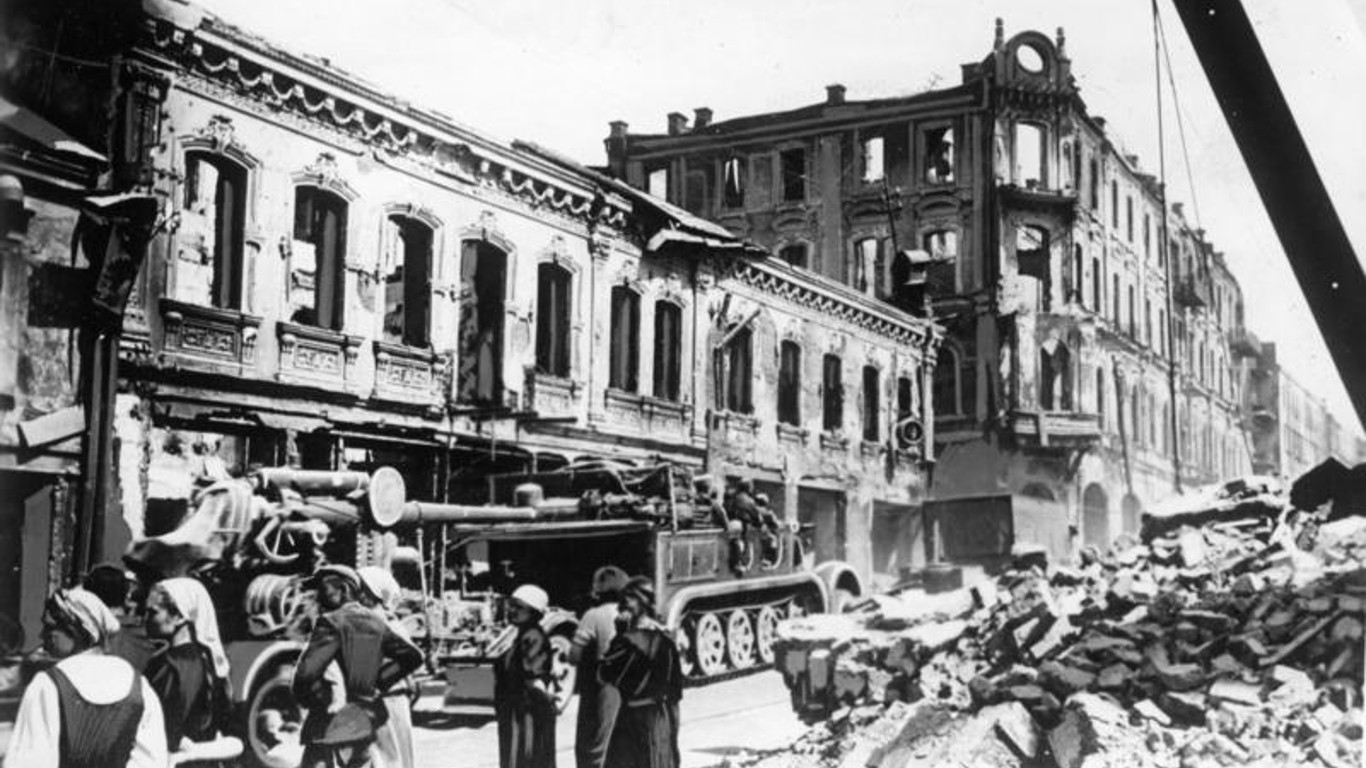
Though tanks technically existed on the battlefield the prior year, it was really during 1917’s World War I Battle of Cambrai that these heavily-armored behemoths became one of the most fearsome weapons on any battlefield. The modern tank has become the centerpiece of modern combat during the 20th century. History-changing military strategies, like the blitzkrieg, relied on the tank.
To determine the largest tank battles in history, 24/7 Wall St. reviewed data from Tony Jaques’ 2006 military encyclopedia “Dictionary of Battles and Sieges: A Guide to 8,500 Battles from Antiquity through the Twenty-first Century” and other sources. Military battles were ranked based on the total number of tanks facing off among all belligerents at any one time during the course of fighting. Because tank counts can be inconsistent across sources, we tried to use the same source where possible.
The Germans were quick to employ the tank in concentration of numbers to punch through an enemy’s defenses and avoid the stalemate of the First World War. Theirs were among the most fearsome armored vehicles in World War II, first for their rapid advance and later, for their massive giant tanks with enormous firepower like the Tiger and Panther that outgunned the Allies. (Also read: the US Army’s slowest and fastest tanks of all time.)
The four biggest tank battles took place during World War II, and the top three were between the Soviet Union and Nazi Germany. Germany won virtually all the confrontations, even though it was outnumbered almost every time, sometimes by as much as 10 to 1. There are seven massive tank battles on the list between the Soviet Union and Germany. Given the flat landscape of the Russian steppes, there is plenty of room for tanks to maneuver. (These are the most mass-produced tanks in US Army history.)
Great tank battles have taken place in more recent times. Though outnumbered, Israel prevailed over the Syrians on the Golan Heights and the Egyptians in the Sinai desert during the Yom Kippur War in 1973 because of better tactics and superior equipment. In the Persian Gulf War in 1991, coalition forces expelled Iraq from Kuwait with overwhelming tank firepower that left Iraqi tanks smoldering hulks in the desert.
Click here to see the largest tank battles in history
15. Battle of Hannut
> Total estimated strength: 1,218 tanks
> Belligerents: France, Netherlands, Belgium (600 tanks), Germany (618 tanks)
> Conflict: World War II
> Dates: May 12, 1940 to May 14, 1940
This was the first major tank battle of World War II and occurred just after Germany launched its attack on the Low Countries (Netherlands, Belgium, and Luxembourg) and France. France had a qualitative advantage in tanks at this time, but Germany prevailed because of its superior tactical deployment and mobility. The German tanks also had more crew members, so the commander could focus on command tasks. French commanders had to act as a gunner and assistant gunner besides commanding. The success was crucial in Germany’s eventual trapping of Allied armies at Dunkirk.
[in-text-ad]
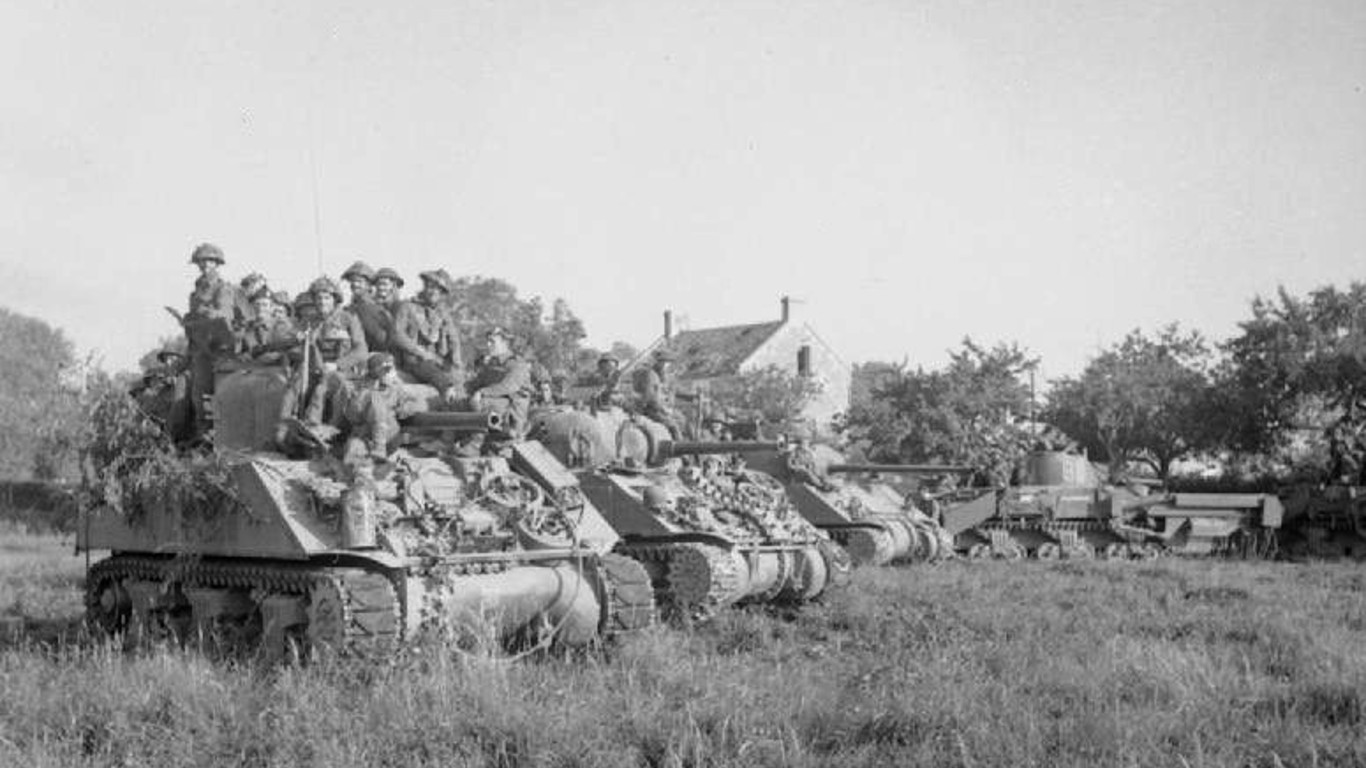
14. Operation Goodwood
> Total estimated strength: 1,477 tanks
> Belligerents: United Kingdom (1,100 tanks), Germany (377 tanks)
> Conflict: World War II
> Dates: July 18, 1944 to July 20, 1944
Following the Normandy invasion, the Allies troop movements had reached a stalemate and could not break out from the beaches. Field Marshal Bernard F. Montgomery decided on a plan titled Operation Goodwood to launch a huge armored assault that would capture the city of Caen and break the deadlock. It failed to do so.
The Germans schooled the Allies with skillful fighting withdrawals and well-coordinated counterattacks. German tank repair crews reclaimed damaged German and Allied tanks. While the allied lost over 200 tanks, the Germans lost only 75, with more than 40 were because of Allied bombing. Because of poor weather that limited Allied air superiority and inadequate British coordination and intelligence, Goodwood was a German defensive victory of the Normandy campaign.
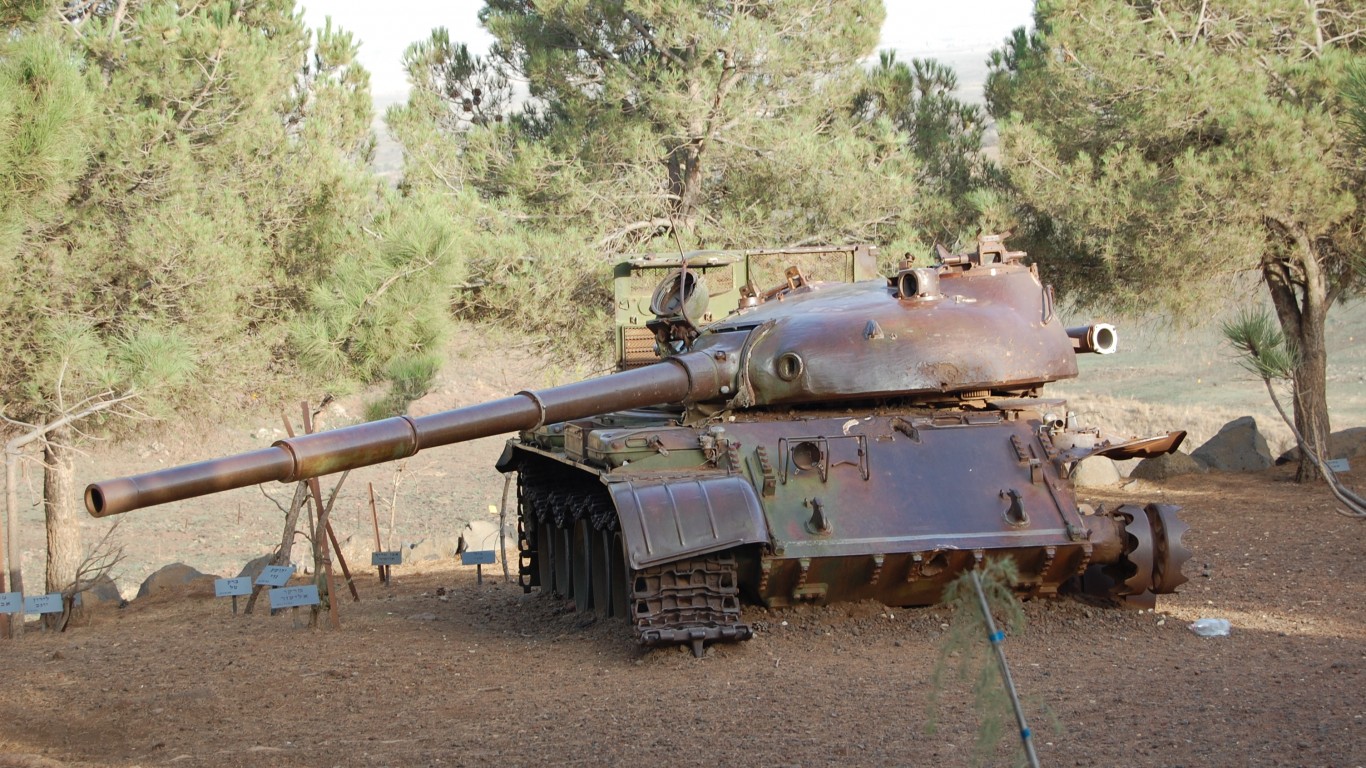
13. Battle of the Valley of Tears
> Total estimated strength: 1,500 tanks
> Belligerents: Israel (100 tanks), Syria (1,400 tanks)
> Conflict: Yom Kippur War
> Dates: Oct. 6, 1973 to Oct. 9, 1973
The Battle of the Valley of Tears was fought in the Golan Heights, the area between Syria and Israel, during the Yom Kippur War in 1973. Of Syria’s 1,400 tanks, about 400 were T-62s, state-of-the-art Soviet tanks at the time. The rest were a combination of older T-54 and T-55s. Facing them were two Israeli armored brigades of Centurion and M-48 Patton tanks. The overwhelming number of Syrian tanks penetrated the Israeli defenses at first, but the ferocity of the defenders bought Israel time to call up its reserves to reverse Syria’s gains. The number of destroyed tanks in the area earned it the name “Valley of Tears.”
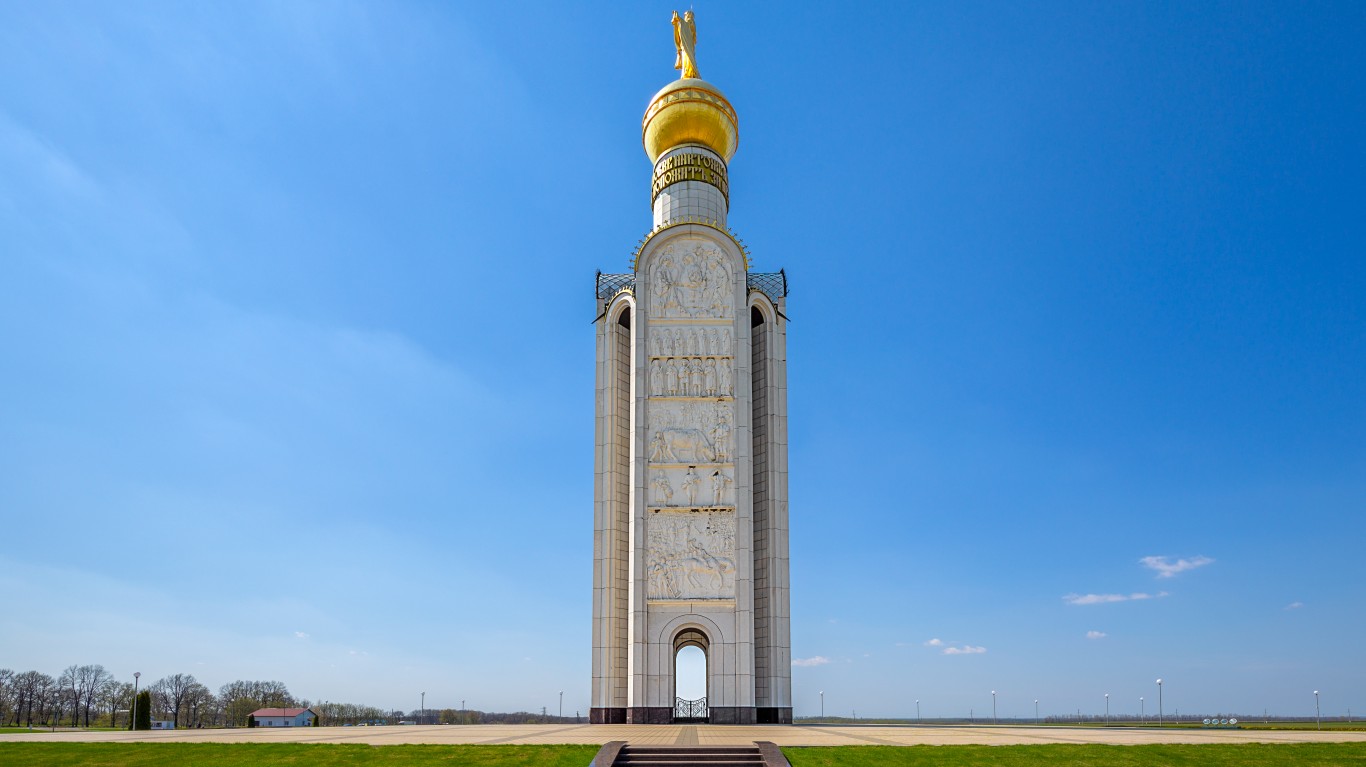
12. Battle of Prokhorovka
> Total estimated strength: 1,550 tanks
> Belligerents: Germany (700 tanks), Soviet Union (850 tanks)
> Conflict: World War II
> Dates: July 12, 1943 to July 13, 1943
The German military operation known as Operation Citadel was an attempt by the Nazis to regain the offensive initiative on the eastern front. Prokhorovka was the focus of the offensive. As it turned out, Citadel would be the last German offensive in the east. On July 12, 1943, counter-attacking Soviet tanks advanced over open ground and sustained heavy losses to German tank fire, including from heavily armored Tigers with 88-millimeter guns. Though this was a tactical loss for the Russians, their action inflicted enough damage to help stall,â and eventually stop, âthe German offensive.
[in-text-ad-2]
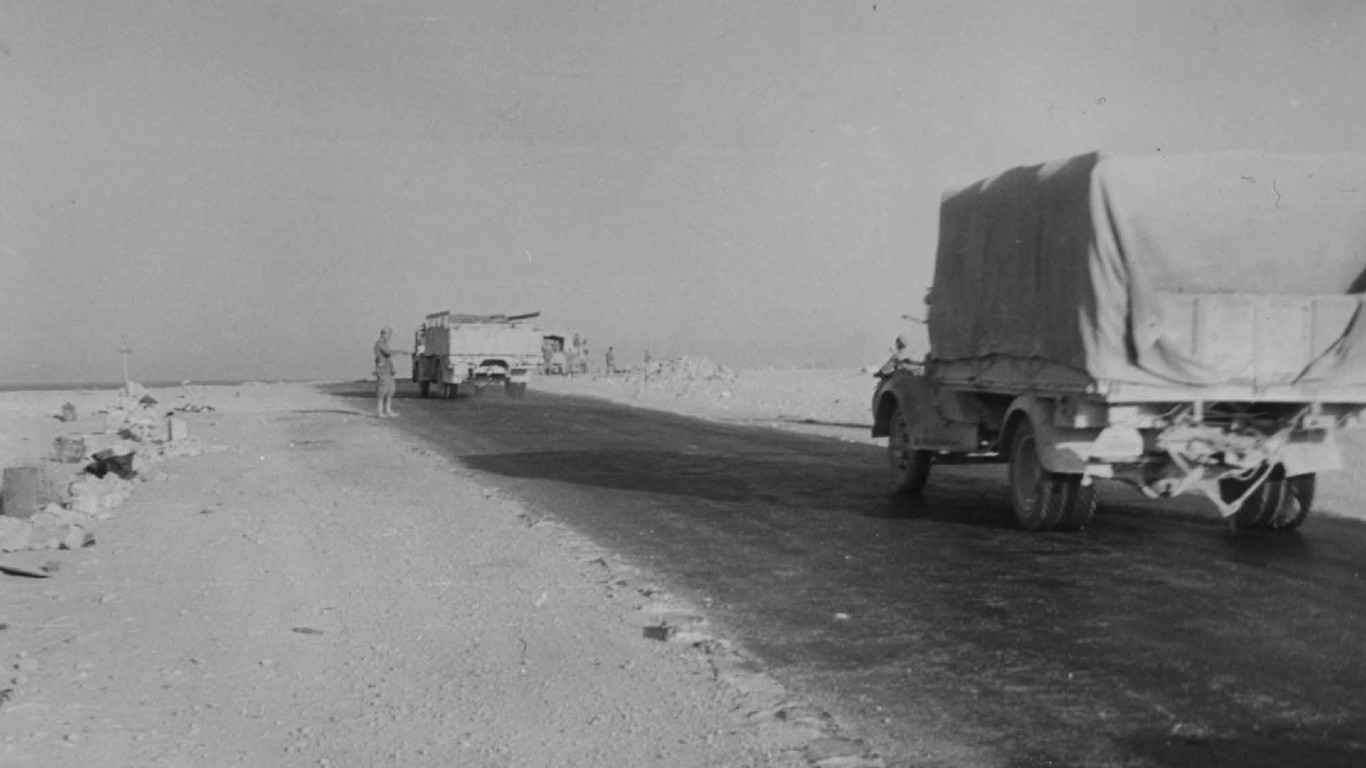
11. Second Battle of El Alamein
> Total estimated strength: 1,576 tanks
> Belligerents: Allied powers (1,029 tanks), Axis powers (547 tanks)
> Conflict: World War II
> Dates: Oct. 23, 1942 to Nov. 11, 1942
The Second Battle of El Alamein, fought near the western frontier of Egypt, was won by the British Eighth Army led by Montgomery. The Axis forces of Germany and Italy were helmed by the legendary “Desert Fox,” Field Marshal Erwin Rommel. Earlier in the year, the first battle of El Alamein had ended in a stalemate. A strong British defensive position and the Qattara Depression, an area of quicksand impassable to mechanized forces, reduced the effectiveness of Germany’s tank formations. Superior numbers of equipment and air superiority also favored the British. This battle proved to be the turning point of the North African campaign in the Second World War.
10. Battle of Bryansk
> Total estimated strength: 1,700 tanks
> Belligerents: Germany (500 tanks), Soviet Union (1,200 tanks)
> Conflict: World War II
> Dates: Oct. 2, 1941 to Oct. 21, 1941
There were at least four major tank engagements between the Soviet Union and Nazi Germany in 1941 and in this was one, Soviet resistance helped halt the Nazi advance on Moscow. Led by General Heinz Guderian, who pioneered the use of mobile, mechanized troops, the Germans attacked in an unexpected direction and took the cities of Bryansk and Oryol. In the process, three Soviet armies were encircled. The enveloped Russians never stopped fighting, delaying the Nazi march to Moscow by two weeks. This and heavy autumn rains and the onset of winter contributed to the German failure to take Moscow.
[in-text-ad]
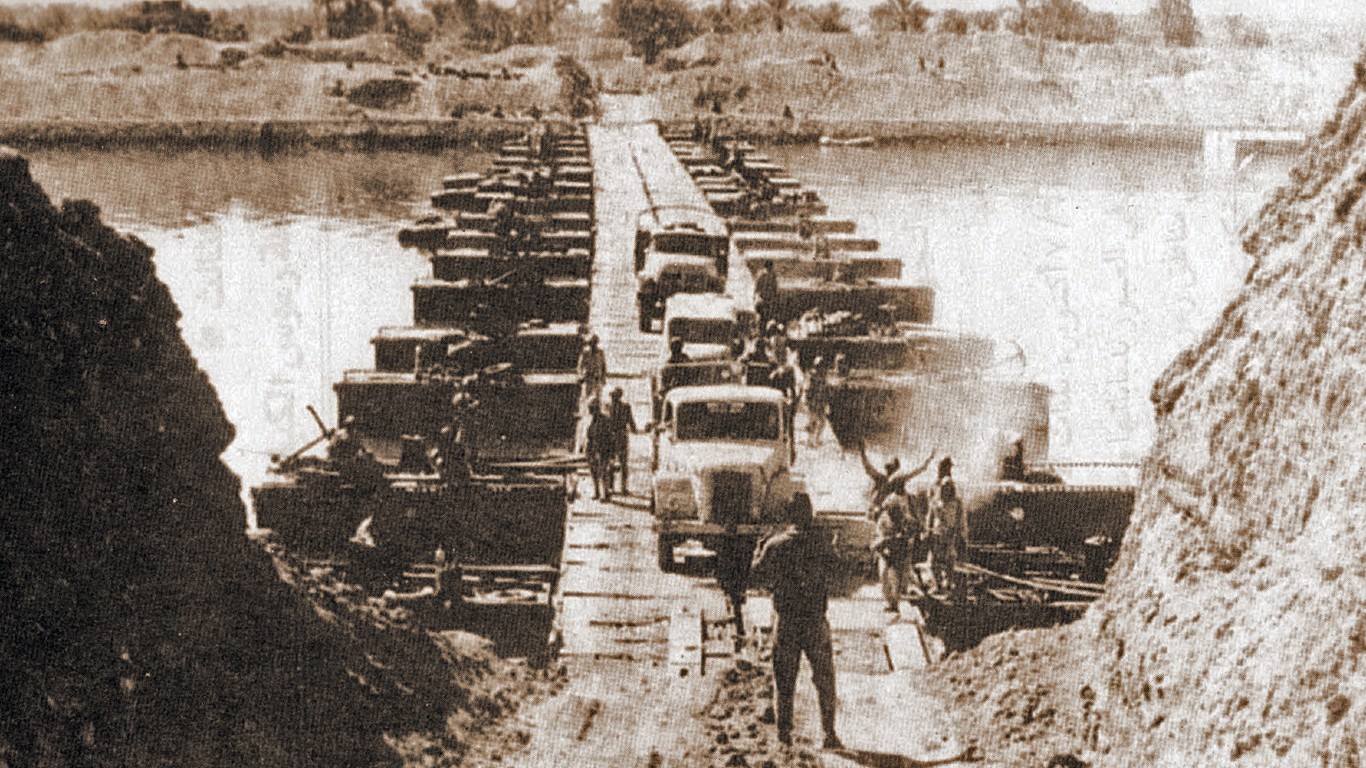
9. Battle of the Sinai
> Total estimated strength: 1,800 tanks
> Belligerents: Israel (800 tanks), Egypt (1,000 tanks)
> Conflict: Yom Kippur War
> Dates: Oct. 14, 1973
After the Syrian defeat in the Golan Heights, Egypt continued to engage Israel in the Sinai. Egyptian armor unleashed an assault with 1,000 tanks in what was the largest tank battle since World War II. Israeli tanks halted the attack, destroying 250 Egyptian tanks, and then drove the Egyptians back across the Suez Canal and almost went to Cairo before the Arabs asked for a ceasefire.
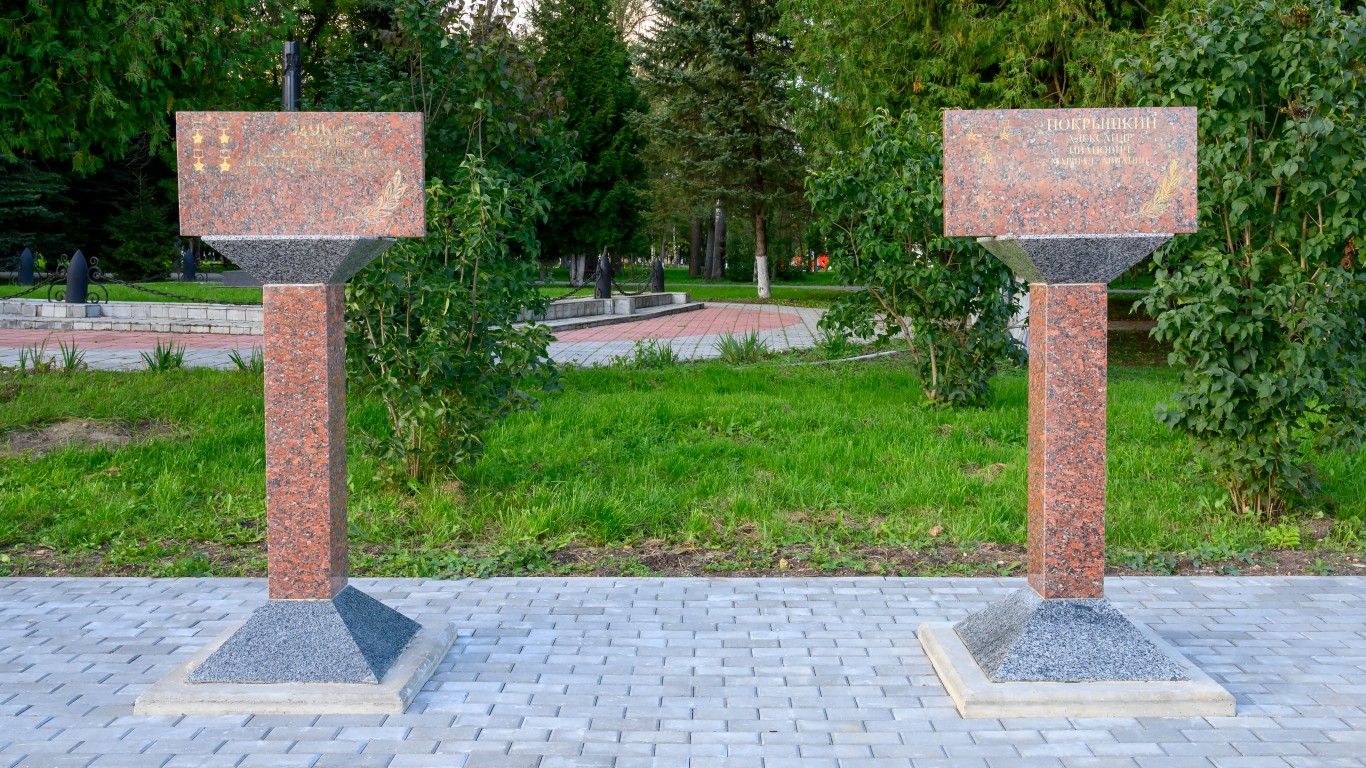
8. Battle of Rzhev
> Total estimated strength: 1,949 tanks
> Belligerents: Germany (234 tanks), Soviet Union (1,715 tanks)
> Conflict: World War II
> Dates: July 30, 1942 to Oct. 1, 1942
The Battle of Rzhev in the summer of 1942 was part of a series of engagements that lasted 15 months in the center of the eastern front. Rzhev, 140 miles west of Moscow, was captured by the Nazis during Operation Typhoon the previous winter when a German advance on Moscow was halted. The Soviets, under generals Konev and Zhukov, counter-attacked beginning in July 1942. Stubborn German resistance stopped the Soviet offensive, and the Russians failed to take advantage of their numerical superiority in tanks. The Russians suffered tremendous casualties and gained little ground.
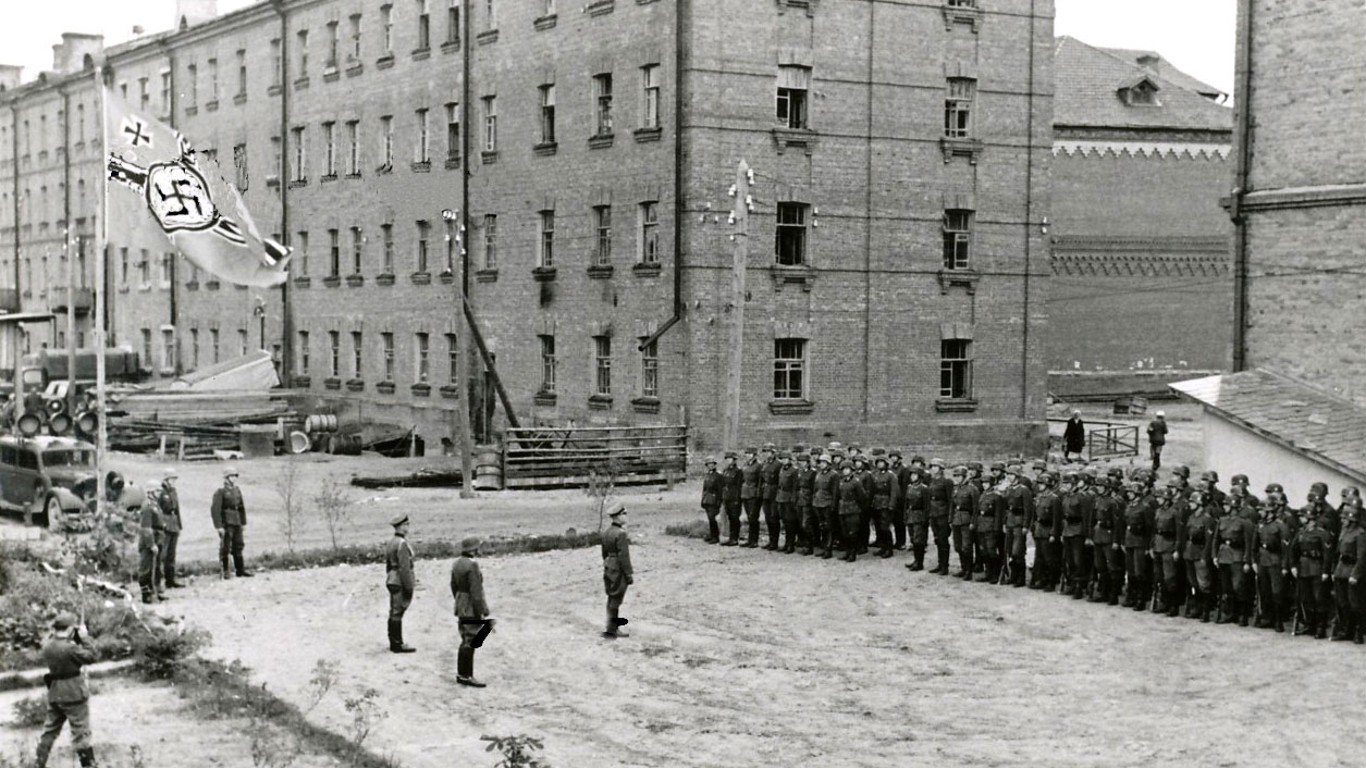
7. Battle of Smolensk
> Total estimated strength: 2,545 tanks
> Belligerents: Germany (1,000 tanks), Soviet Union (1,545 tanks)
> Conflict: World War II
> Dates: July 8, 1941 to July 31, 1941
The area around Smolensk is a 45-mile wide land area between the headwaters of the Dvina and Dnieper rivers. It has been the invasion route into the heart of Russia and Moscow from the west, taken by the Poles in the 17th century and Napoleon in 1812. The region would see vicious fighting in 1941. German Army Group Center, commanded by tank generals Heinz Guderian and Hermann Hoth, was tasked with encircling the Soviet troops defending the line of the Dvina and Dnieper rivers, to seize the cities of Vitebsk, Orsha, and Smolensk, and open the way to Moscow. It was one of the bitterest battles of World War II, and even though Soviet losses were heavy and the Germans gained ground, the Russians slowed the German advance to Moscow.
[in-text-ad-2]

6. Battle of Norfolk
> Total estimated strength: 2,837 tanks
> Belligerents: United States, Britain (1,487 tanks), Iraq (1,350 tanks)
> Conflict: Gulf War
> Dates: Feb. 27, 1991
The Battle of Norfolk is one of two major tank battles on this list that was fought during the Persian Gulf War in 1991. It pitted the armored forces of the U.S. and the U.K. against the Ba’athist Iraqi Republican Guard in the Muthanna Province of southern Iraq. Iraqi armor was completely overmatched as American and British forces destroyed about 850 Iraqi tanks and hundreds of other types of combat vehicles. It was the last battle of the conflict before the ceasefire took effect.
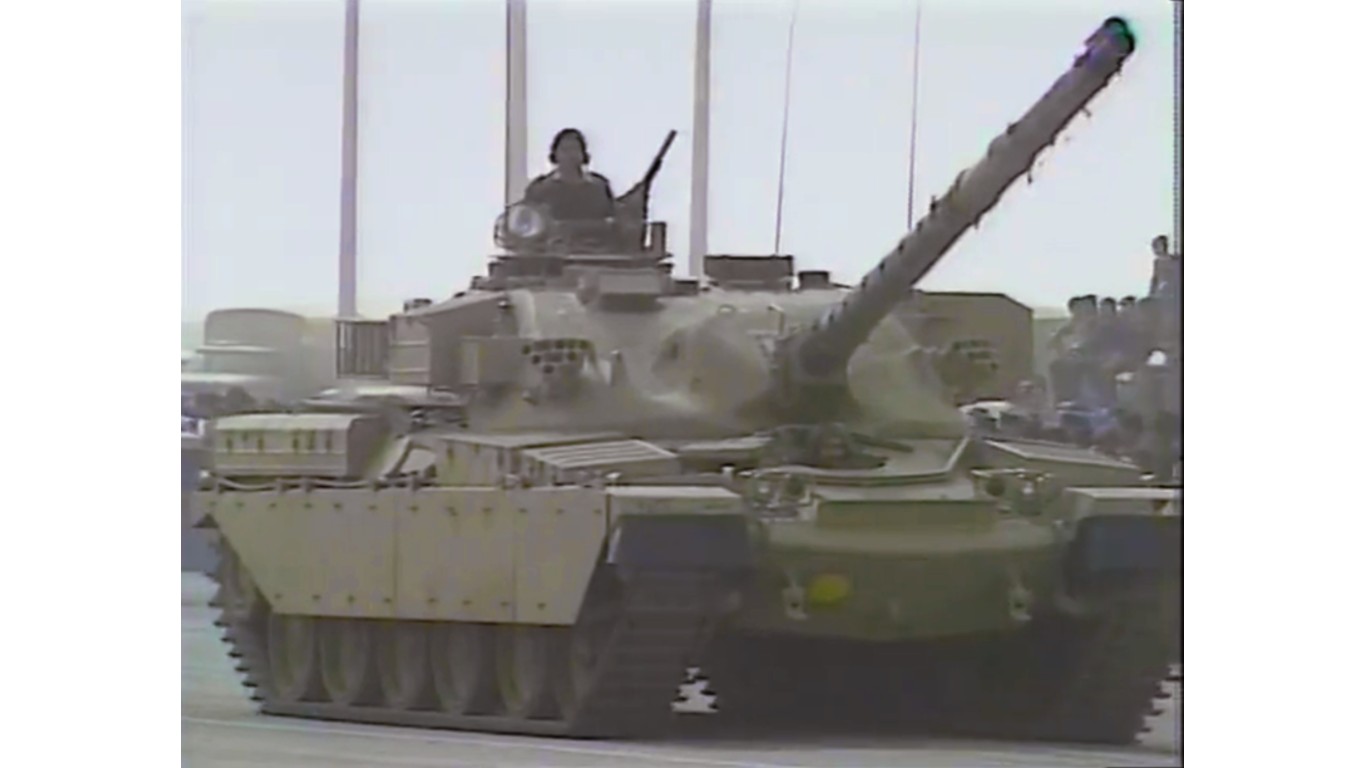
5. Fright Night
> Total estimated strength: 3,000 tanks
> Belligerents: United States (1,900 tanks), Iraq (1,100 tanks)
> Conflict: Gulf War
> Dates: Feb. 24, 1991 to Feb. 28, 1991
On Feb. 24, 1991, about 3,000 tanks and thousands of armored vehicles along with infantry surged across the lightly guarded Saudi-Iraqi border as part of the effort to liberate Kuwait from Iraq. Commanding General Norman Schwarzkopf had devised a plan in which Allied coalition tanks would head north into Iraq, then turn east toward occupied Kuwait City, destroying resistance enroute.
Two days into the operation, American M1A1 tanks encountered the Republican Guard tanks. Several coalition units fought wave after wave of Iraqi tanks for four hours. Later on, more U.S. armored units battled more Republican Guard tanks in fierce and chaotic fighting. The Iraqi tanks were completely outgunned by the coalition’s armor. When the 100-hour Gulf War was over, about 3,300 Iraqi tanks were destroyed; the coalition lost 31.
[in-text-ad]
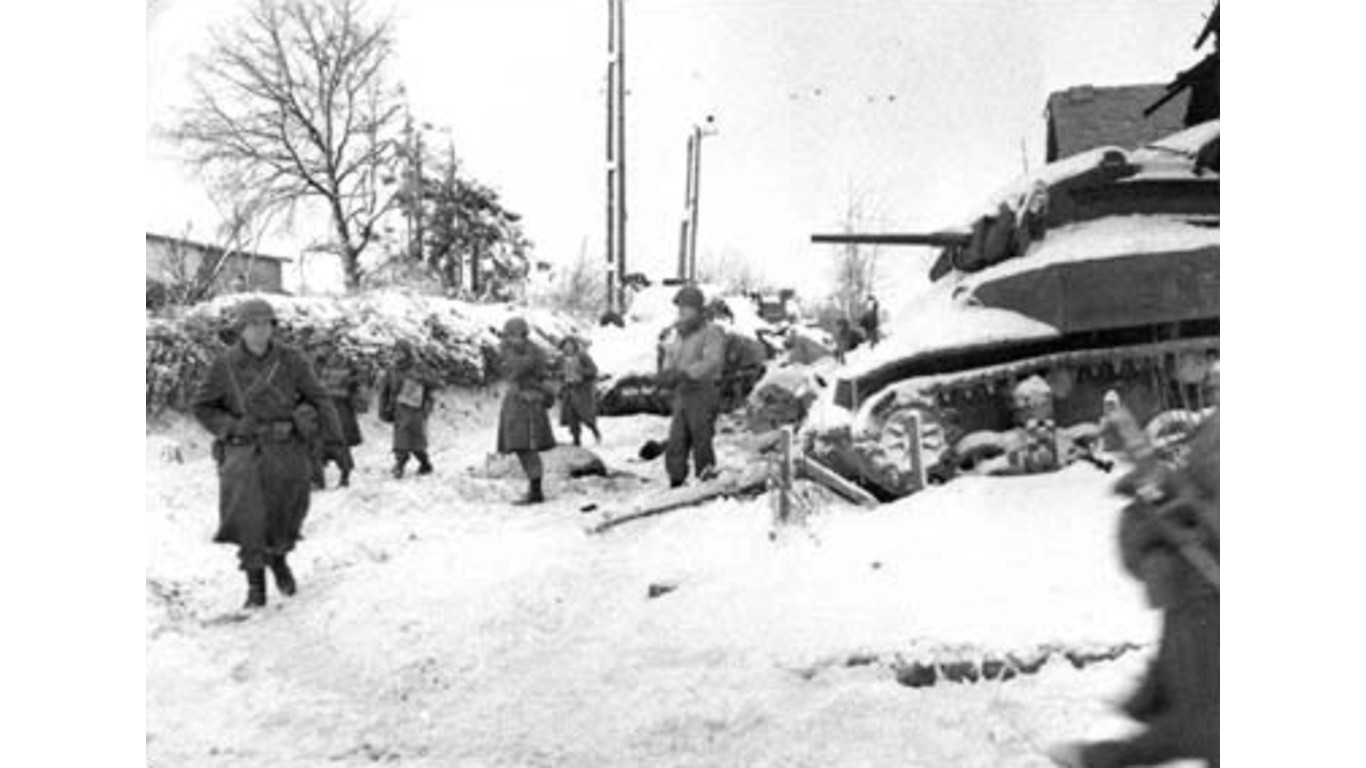
4. Battle of the Bulge
> Total estimated strength: 3,400 tanks
> Belligerents: Allied powers (2,000 tanks), Germany (1,400 tanks)
> Conflict: World War II
> Dates: Dec. 16, 1944 to Jan. 25, 1945
The Battle of the Bulge was Nazi leader Adolf Hitler’s great gamble to split the Allies armies and force them to the peace table. At the start of the battle, the Germans had the advantage in numbers in men, guns, and tanks, which included the Panzer IVs, Panthers, Tiger 1s and Tiger 2s. The U.S. Sherman tank had thinner armor and less firepower than its German counterparts.
The German offensive was slowed by pockets of U.S. resistance and lack of fuel for its tanks. Counterattacks that included General George Patton’s Third Army thwarted the German advance, and the battle ended in a German defeat.
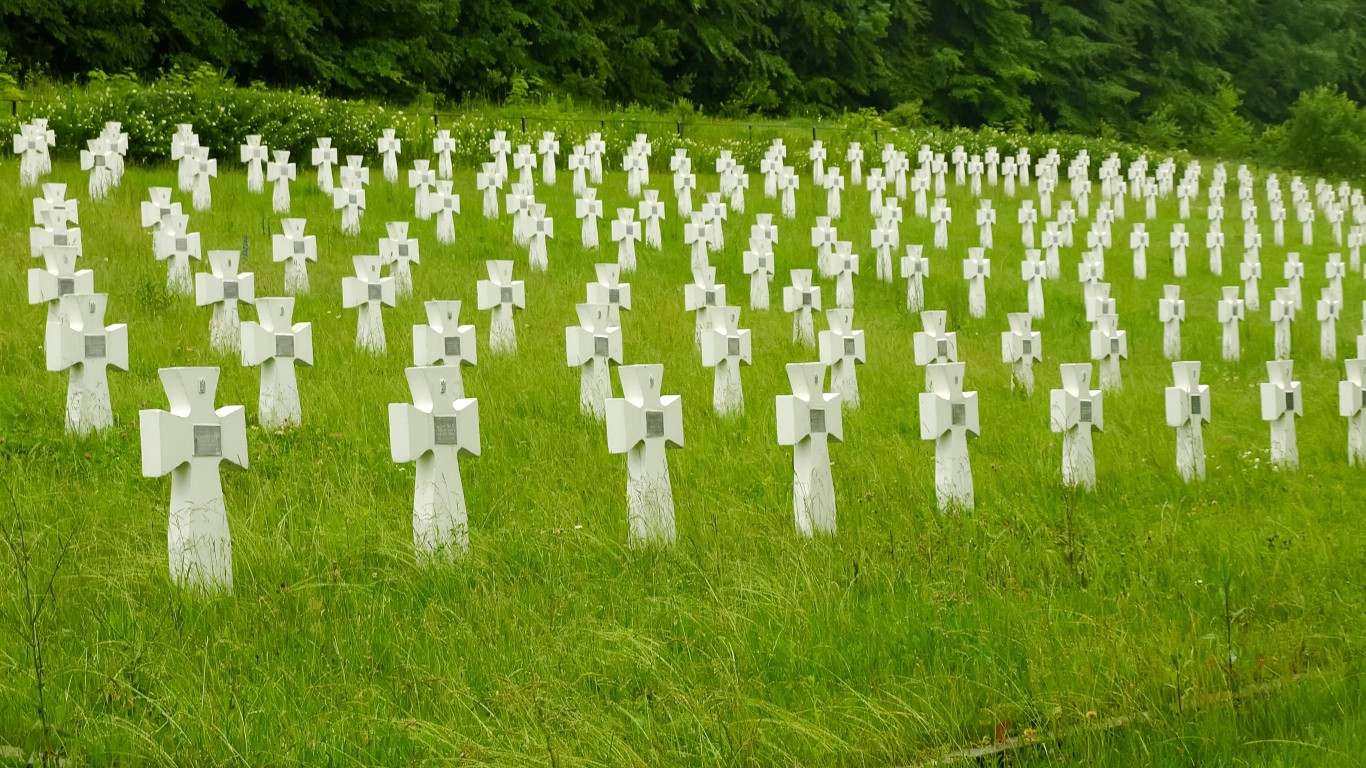
3. Battle of Brody
> Total estimated strength: 3,850 tanks
> Belligerents: Germany (350 tanks), Soviet Union (3,500 tanks)
> Conflict: World War II
> Dates: June 23, 1941 to June 30, 1941
The Battle of Brody in western Ukraine was a World War II tank battle fought between the German’s 1st Panzer Group’s III Army Corps and XLVIII Army Corps and five mechanized corps of two Soviet armies in the early stages of Germany’s invasion of the Soviet Union. The Red Army inflicted considerable casualties on the invaders. Despite having technological and numerical advantages, the Soviet Union lost the battle because of German air superiority, poor logistics, and a breakdown in command.
2. Battle of Bialystok-Minsk
> Total estimated strength: 6,458 tanks
> Belligerents: Germany (1,936 tanks), Soviet Union (4,522 tanks)
> Conflict: World War II
> Dates: June 22, 1941 to July 9, 1941
Operation Barbarossa, Germany’s invasion of the Soviet Union, commenced on June 22, 1941, displaying the full range of blitzkrieg tactics that caused the collapse of the Russian front line. The main thrust of the German effort was in the center, with two Panzer groups led by generals Heinz Guderian and Herman Hoth. By the end of June, all or most of four Soviet armies were trapped in pockets in Bialystok and Minsk. The Germans eliminated the resistance in both pockets and bagged almost 300,000 prisoners of war.
[in-text-ad-2]
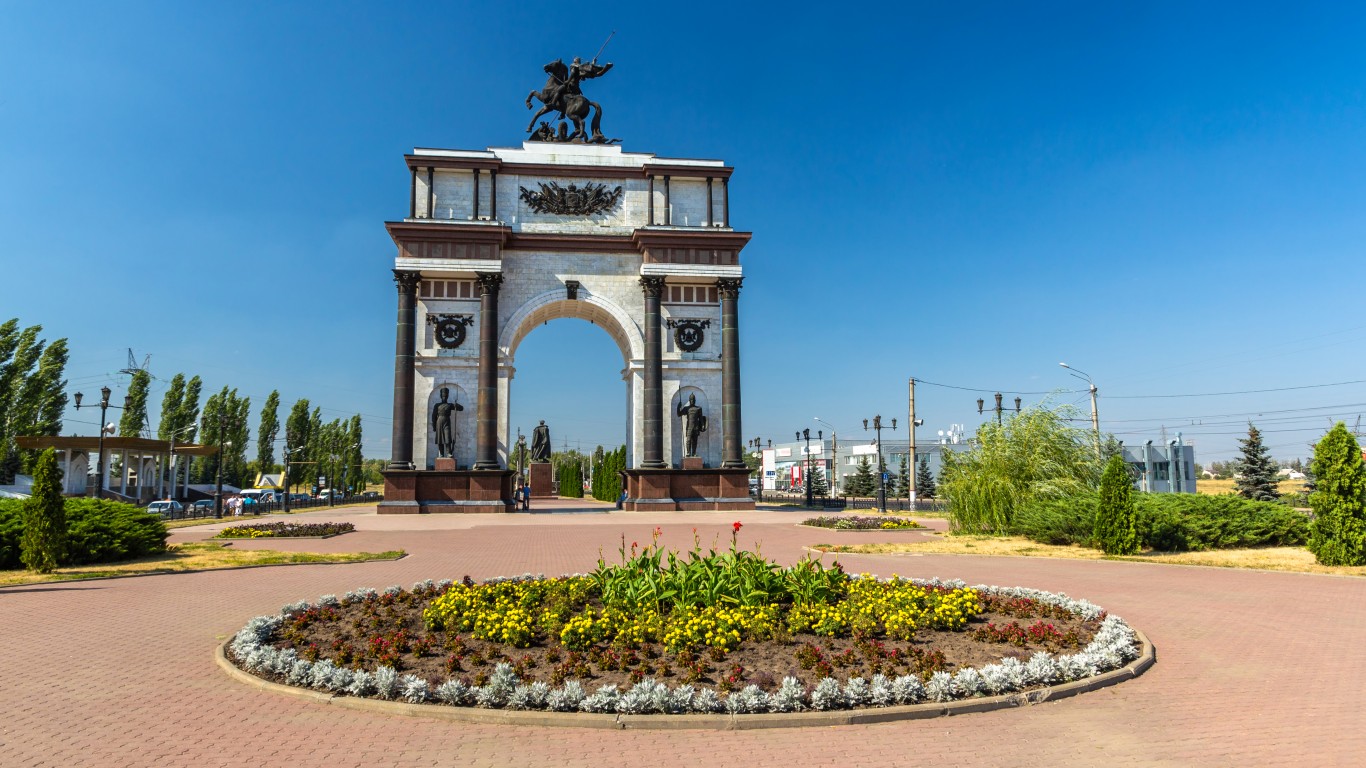
1. Battle of Kursk
> Total estimated strength: 10,613 tanks
> Belligerents: Germany (3,253 tanks), Soviet Union (7,360 tanks)
> Conflict: World War II
> Dates: July 5, 1943 to Aug. 23, 1943
The titanic Battle of Kursk is regarded as the greatest tank battle in history. This conflict, as well as the Battle of Stalingrad, turned the tide on the eastern front. The Germans had scheduled the attack known as Operation Citadel at the salient around Kursk in May. They delayed the operation so they could bring to bear new, more powerful weapons such as the Panzer V (Panther Tank) Panzer VI (Tiger Tank) and the Elephant/Ferdinand Heavy Tank Destroyer.
The Russians countered with T-34s, KV-1s, T-70s, and some British Churchill tanks. The Soviets got wind of the German plan and the delay gave them time to build a formidable defense. The Tigers and Panthers were effective, but there were too few of them to make a difference. The Russians blunted the German attack and pushed the Germans back to their starting positions. Never again would Nazi Germany launch a major offensive on the eastern front.
Credit card companies are handing out rewards and benefits to win the best customers. A good cash back card can be worth thousands of dollars a year in free money, not to mention other perks like travel, insurance, and access to fancy lounges. See our top picks for the best credit cards today. You won’t want to miss some of these offers.
Flywheel Publishing has partnered with CardRatings for our coverage of credit card products. Flywheel Publishing and CardRatings may receive a commission from card issuers.
Thank you for reading! Have some feedback for us?
Contact the 24/7 Wall St. editorial team.
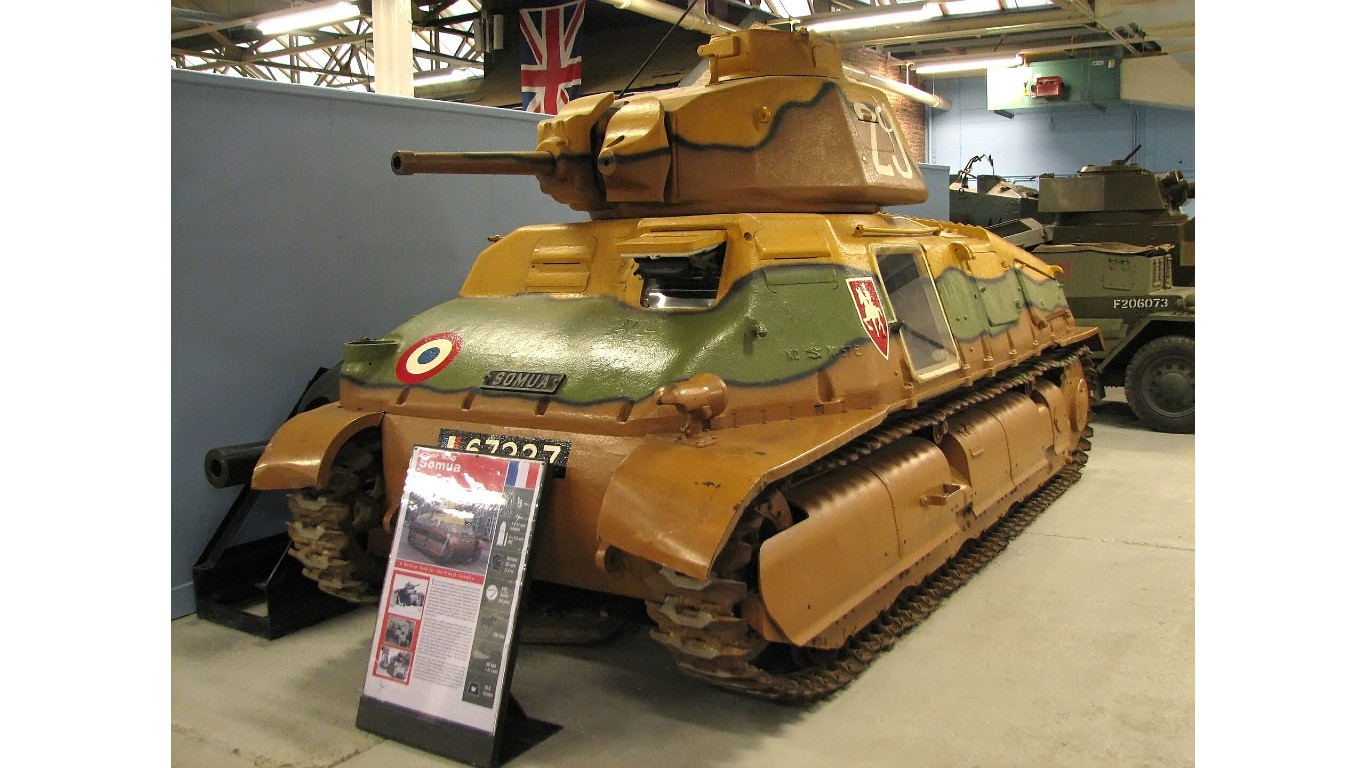
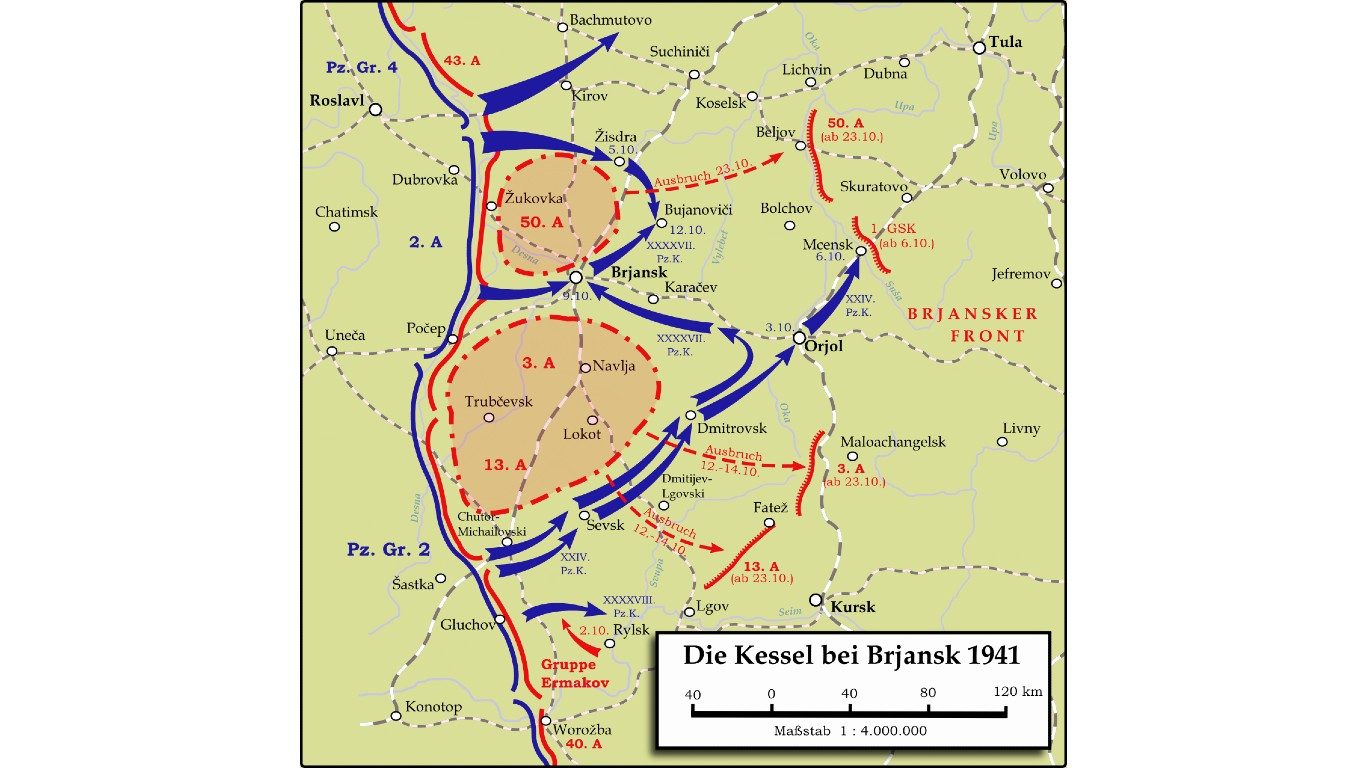
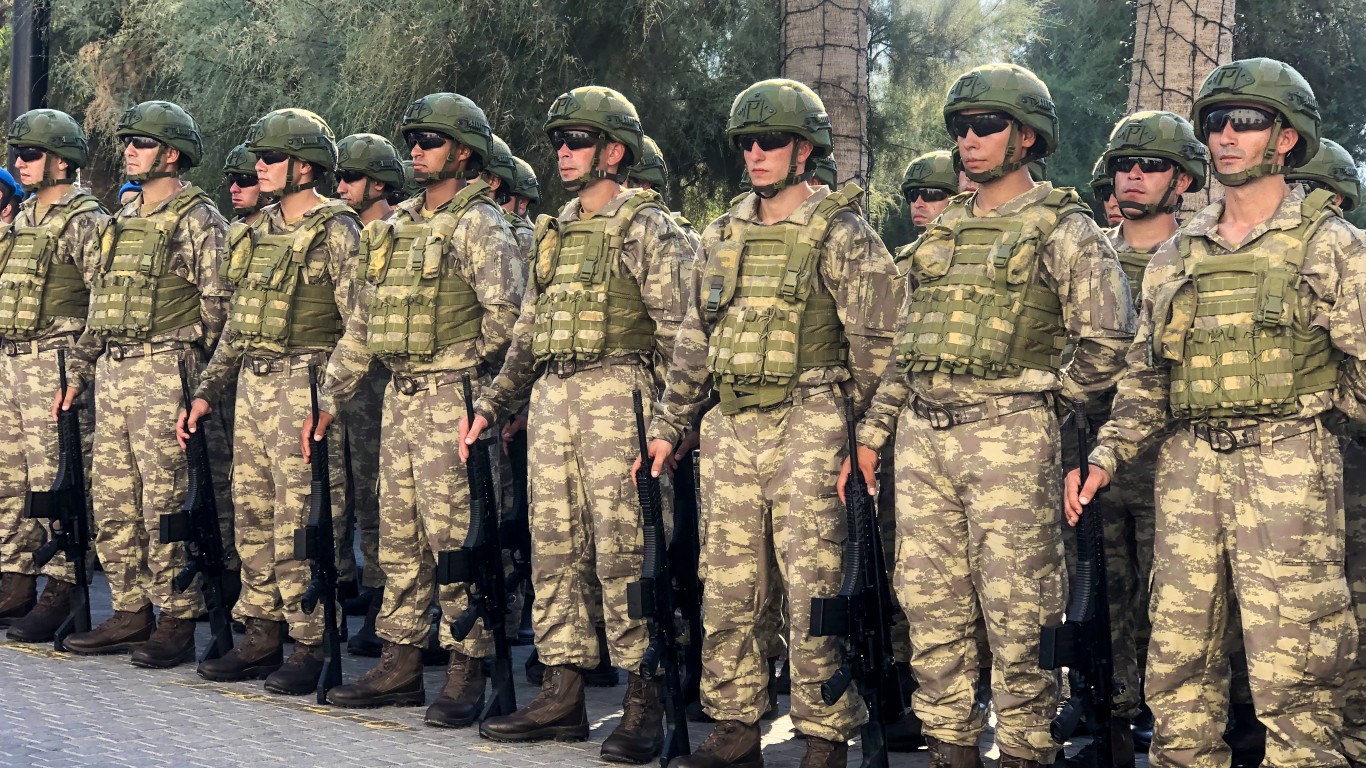 24/7 Wall St.
24/7 Wall St.